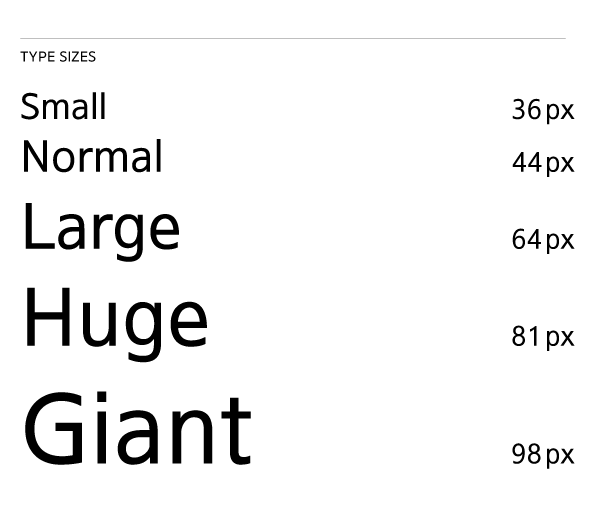Are you a graphic design student searching for a guiding light to inspire your thesis topic? Look no further! This article will serve as your compass, providing a comprehensive list of examples of graphic design thesis topics to ignite your creativity and make you stand out. From exploring the impact of graphic design on consumer markets to delving into the evolution of digital art, there’s a plethora of exciting and relevant topics to choose from. In addition, we’ll discuss the importance of crafting a strong thesis proposal and offer tips to help you successfully complete your thesis. With the right topic and proper guidance, you can proudly showcase your creative thinking and impressive skills, leaving a lasting impression on potential employers and paving the way for a thriving career in graphic design. So, let’s embark on this journey together and uncover a world of graphic design thesis ideas!
Unique Graphic Design Thesis Ideas
If you’re looking for unique graphic design thesis ideas, there are plenty of intriguing topics that can captivate your audience and showcase your creativity and design skills. One interesting topic to explore is the psychological impact of multimedia design. This topic delves into how different design elements, such as color, typography, and layout, can affect the emotions and perceptions of viewers. By studying the psychological principles behind design choices, you can create visually compelling and impactful designs that resonate with your audience on a deeper level.
Another compelling topic is organizational branding and its impact on consumer behavior. This topic allows you to examine how branding elements, such as logos, color schemes, and typography, influence consumers’ perceptions and purchasing decisions. You can explore the strategies used by successful brands to create a strong brand identity and analyze the effectiveness of different branding techniques.
Service design is another fascinating area to explore in your thesis. This topic focuses on the design of services and how it impacts the user experience. You can research and analyze different service design approaches and their effectiveness in enhancing customer satisfaction and loyalty.
Lastly, trade show displays offer an exciting topic to explore in your thesis. You can investigate how design elements, such as booth layout, signage, and interactive displays, can attract and engage trade show attendees. By studying successful trade show displays, you can gain insights into effective design strategies that can help businesses stand out in a crowded exhibition space.
Impact of Graphic Design on Branding
How does graphic design impact branding? Graphic design plays a crucial role in shaping the perception of a brand and creating a strong brand identity. Through its use of visual communication, graphic design has a psychological impact on consumers, influencing their perception of a brand and their purchasing decisions. The design elements, such as colors, typography, and imagery, can evoke emotions and create a connection between the brand and the consumer.
A well-designed brand identity can differentiate a company from its competitors and attract the target audience. By effectively communicating the brand’s values, personality, and unique selling points, graphic design helps to establish a strong brand identity that resonates with consumers. This, in turn, leads to increased brand recognition and loyalty.
Graphic design also plays a crucial role in shaping marketing strategies. It helps to create visually appealing and engaging marketing materials that capture the attention of the target audience. Whether it’s designing a logo, packaging, advertisements, or website, graphic design ensures consistency and coherence across all touchpoints, reinforcing the brand’s message and values.
Evolution of Digital Art in Graphic Design
What has been the impact of digital technology on the evolution of art in graphic design? Digital technology has revolutionized the field of graphic design, transforming the way artists create and communicate their ideas. With the advent of digital art techniques, interactive design, virtual reality integration, generative design algorithms, and the evolution of motion graphics, the possibilities for artistic expression have expanded exponentially.
Digital art techniques, such as digital painting and 3D modeling, have allowed graphic designers to push the boundaries of their creativity. They can now create intricate and realistic illustrations, manipulate images with ease, and experiment with new styles and aesthetics. Interactive design has also become a prominent feature in graphic design, enabling designers to create engaging user experiences through websites, apps, and other digital platforms.
Virtual reality integration has further enhanced the evolution of digital art in graphic design. Designers can now immerse their audience in virtual worlds, allowing them to interact with and explore visual narratives in unprecedented ways. This integration has opened up new possibilities for storytelling and brand experiences.
Generative design algorithms have also played a significant role in the evolution of digital art. These algorithms enable designers to create complex and dynamic visuals by programming rules and parameters, allowing for the generation of unique and ever-changing designs.
Lastly, the evolution of motion graphics has transformed the way graphic designers communicate ideas and information. With the rise of animation and video content, designers can now convey messages in a more dynamic and engaging manner, capturing the attention of their audience and leaving a lasting impact.
Current Trends in Graphic Design Software
Explore the latest advancements and innovations in graphic design software that are shaping the field of graphic design today. The role of AI in graphic design has become increasingly significant, with machine learning algorithms being used to automate repetitive tasks and assist designers in generating creative ideas. Virtual reality is also emerging as a powerful tool in graphic design, allowing designers to create immersive experiences and showcase their work in a more interactive and engaging way. Data visualization has had a profound impact on graphic design, as designers use visual representations of data to communicate complex information in a clear and concise manner. However, ethical considerations in graphic design technology have also come to the forefront, as designers grapple with issues such as privacy, consent, and the responsible use of user data. Furthermore, the integration of augmented reality in graphic design is revolutionizing the way designers create and communicate their ideas, blurring the line between the physical and digital worlds. As graphic design software continues to evolve, it is crucial for designers to stay updated on these current trends and adapt their skills to the changing landscape of the industry.
Role of Graphic Design in Environmental Awareness
Graphic design plays a crucial role in raising environmental awareness through visually impactful and persuasive designs. It has the power to influence and shape people’s perceptions and behaviors towards the environment. One of the key areas where graphic design contributes to environmental awareness is in sustainable architecture. Designers use their skills to create visually appealing and informative materials that educate the public about the importance of sustainable and eco-friendly building practices.
Another important aspect is the impact of graphic design on eco-friendly packaging. Designers can use their expertise to develop innovative and eye-catching designs for packaging that is environmentally friendly, using sustainable materials and promoting recycling.
Graphic design also plays a vital role in promoting renewable energy. Through visual communication, designers can create engaging and informative materials that educate the public about the benefits of renewable energy sources such as solar power or wind energy.
Furthermore, graphic design has the power to influence environmental activism. Designers can create compelling visuals that inspire and motivate individuals to take action and make a positive impact on the environment.
Lastly, the importance of visual communication cannot be underestimated in raising awareness about climate change. Graphic design can effectively convey complex information and data through visually appealing infographics, illustrations, and animations, making it easier for people to understand and engage with the issue.
Influence of Animation in Graphic Design
Animating has a significant influence on the field of graphic design. Animation techniques in UX design play a crucial role in enhancing user experience by adding dynamic elements and interactions. The use of animation in storytelling is another important aspect, as it allows for the creation of engaging narratives and visual narratives. Animated logos in branding have become increasingly popular, as they can effectively capture attention and communicate the brand’s identity. Animation also plays a vital role in user engagement, as it can grab and hold the viewer’s attention through movement and visual interest. Furthermore, the integration of animation in web design has become prevalent, with animations being used to guide users, provide feedback, and create an overall immersive experience. By incorporating animation, graphic designers are able to bring their designs to life, making them more dynamic, engaging, and memorable.
Effects of Visual Design on Social Media Marketing
To understand the impact of visual design on social media marketing, you need to recognize the significant role it plays in capturing and maintaining audience attention. Visual storytelling in social media marketing is a powerful tool that allows brands to communicate their message effectively and engage with their target audience. The psychological effects of graphic design in branding cannot be underestimated, as it has the ability to evoke emotions and create a lasting impression.
One way to integrate visual design in social media marketing is through the use of augmented reality. This technology enhances the user experience by overlaying virtual elements onto the real world, creating an immersive and interactive experience for the audience.
Typography also plays a crucial role in social media engagement. The choice of fonts, styles, and layouts can greatly impact how users perceive and interact with the content. A well-designed typography can convey the brand’s personality and enhance readability, leading to increased engagement and conversions.
User experience design in social media advertising focuses on creating a seamless and enjoyable experience for the audience. By understanding user behavior and preferences, designers can optimize the design elements to maximize engagement and drive results.
Overall, the effects of visual design on social media marketing are profound. By harnessing the power of visual storytelling, leveraging psychological effects, integrating augmented reality, utilizing impactful typography, and prioritizing user experience design, brands can effectively communicate their message, build stronger connections with their audience, and achieve their marketing goals.
| Visual Storytelling in Social Media Marketing | Psychological Effects of Graphic Design in Branding |
|---|---|
| – Captures audience attention | – Evokes emotions |
| – Communicates brand message effectively | – Creates lasting impression |
| – Engages with target audience | – Builds brand identity |
| Integration of Augmented Reality in Graphic Design | Impact of Typography on Social Media Engagement |
|---|---|
| – Enhances user experience | – Influences user perception |
| – Creates immersive and interactive experiences | – Enhances readability |
| – Drives engagement and conversions | – Conveys brand personality |
| User Experience Design in Social Media Advertising |
|---|
| – Optimizes design elements for maximum engagement |
| – Creates seamless and enjoyable user experience |
| – Drives results and achieves marketing goals |
Significance of Color and Imagery in Graphic Design
When considering the significance of color and imagery in graphic design, you can explore the ways in which these elements enhance visual communication and evoke emotional responses from viewers. Color and imagery play a crucial role in graphic design as they have symbolic representation, psychological impact, and cultural associations. Through the use of color, designers can convey specific emotions, create visual hierarchy, and guide the viewer’s attention. Imagery, on the other hand, can tell a story, evoke nostalgia, or convey a specific message.
Color and imagery work together to create visual storytelling in graphic design. They help in creating a narrative and engaging the viewer on a deeper level. The choice of colors and images can evoke specific emotions and elicit desired responses from the audience. For example, warm colors like red and orange can create a sense of excitement and energy, while cool colors like blue and green can convey a feeling of calmness and serenity.
Furthermore, color and imagery are essential in building brand identity. They help in creating a distinct visual style that represents a brand’s personality and values. Consistency in color and imagery across different design materials helps in establishing brand recognition and familiarity.
Historical Influence on Contemporary Graphic Design
The historical influence on contemporary graphic design can be seen through the incorporation of traditional design elements and techniques into modern graphic design practices. Designers today draw inspiration from historical artistry and cultural influences to create innovative and visually appealing designs. This artistic evolution is evident in the design heritage that has been passed down through generations, shaping the way we approach graphic design today.
To better understand the historical influence on contemporary graphic design, let’s take a closer look at the key elements that have shaped the field:
| Historical Artistry | Cultural Inspiration | Artistic Evolution |
|---|---|---|
| Ancient cave paintings | Japanese woodblock prints | Bauhaus movement |
| Renaissance art | Arabic calligraphy | Swiss International Style |
| Art Nouveau | African textile patterns | Pop Art movement |
These historical influences have shaped the way designers approach their work, incorporating elements such as line, color, and composition in innovative ways. By studying and exploring these design traditions, contemporary designers can draw inspiration and create unique and impactful designs that resonate with modern audiences.
In addition to historical artistry and cultural inspiration, contemporary graphic design is also influenced by current trends and technologies. The fusion of past and present creates a dynamic and ever-evolving field, where designers have the opportunity to pay homage to the past while pushing the boundaries of design.
Exploring Innovative Graphic Design Research Topics
Explore exciting and cutting-edge research topics in the field of graphic design to push the boundaries of creativity and innovation. Here are three intriguing areas to consider:
- Research Methodology: Investigate new and innovative approaches to conducting graphic design research. Explore different research methods, such as qualitative and quantitative techniques, to gather data and analyze findings. Dive into the process of data collection and interpretation, and explore how it impacts the outcomes of graphic design projects.
- Innovative Design Techniques: Explore emerging design techniques and technologies that are shaping the future of graphic design. Dive into topics such as augmented reality, virtual reality, and motion graphics. Examine how these techniques can be applied in various industries, such as advertising, marketing, and user experience design.
- Impactful Visual Storytelling: Investigate the power of visual storytelling in graphic design. Explore how graphic designers can effectively communicate messages and evoke emotions through visual narratives. Examine the role of typography, color, composition, and imagery in creating impactful stories. Consider ethical considerations in graphic design storytelling and how it can influence audience perceptions.



